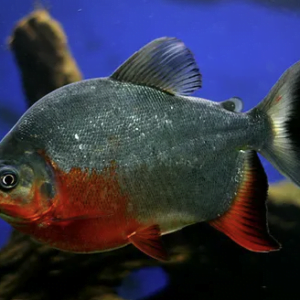Tinfoil Barb
Earn 6.00 Reward Points
₱600.00
Out of stock
Your live fish may not match the image shown due to natural variations in each species. Each companion animal is different in shape, color, and personality.
Scan to Purchase
Here’s a care guide for Tinfoil Barbs (Barbonymus schwanenfeldii) in bullet points:
Tank Setup:
- Tank Size: Tinfoil Barbs can grow quite large, so start with a tank of at least 125 gallons for juveniles and consider upgrading to a larger tank as they grow.
- Open Space: These fish are active swimmers, so provide ample open swimming space in the tank.
- Secure Lid: Make sure the tank has a secure lid, as Tinfoil Barbs are known to jump.
Water Conditions:
- Temperature: Maintain water temperature between 75-82°F (24-28°C).
- pH Level: Keep the pH between 6.0 and 7.5.
- Water Hardness: Maintain moderate water hardness (5-12 dGH).
- Regular Water Changes: Frequent water changes are essential to keep water parameters stable.
Diet:
- Omnivorous: Tinfoil Barbs are omnivores and have a varied diet.
- High-Quality Pellets: Offer high-quality pellets designed for tropical fish.
- Live and Frozen Foods: Provide live or frozen foods like bloodworms, brine shrimp, and daphnia for variety.
- Vegetable Matter: Include some vegetable matter in their diet, such as blanched spinach or zucchini.
Tank Mates:
- Peaceful Community Fish: Tinfoil Barbs are peaceful but can grow quite large, so choose tank mates that are of a similar size and temperament.
- Avoid Aggressive Species: Avoid keeping them with aggressive or fin-nipping fish.
Behavior and Activity:
- Active Swimmers: Tinfoil Barbs are active and social swimmers, often seen in schools.
- Schooling Fish: Keep them in a group of at least six individuals for their well-being and to reduce stress.
Tank Decor:
- Minimal Decor: Tinfoil Barbs can be quite destructive and may uproot plants, so use minimal decor.
- Provide Floating Plants: Offer floating plants like water lettuce or water hyacinth to provide shade and cover.
Health and Disease:
- Quarantine New Fish: Quarantine any new additions to the tank to prevent disease outbreaks.
- Monitor Health: Keep an eye out for signs of stress or disease, such as loss of appetite, rapid breathing, or unusual behavior.
Breeding (Difficult):
- Breeding Difficulty: Breeding Tinfoil Barbs in captivity is challenging and rarely achieved.
Handling and Safety:
- Beware of Sharp Edges: Tinfoil Barbs have sharp edges on their dorsal and pectoral fins. Handle them with care to avoid injury.
Tinfoil Barbs are striking fish known for their metallic coloration and active nature. To ensure their well-being in captivity, it’s essential to provide a spacious tank and a balanced diet. Keeping them in a group allows them to exhibit their natural schooling behavior, and a well-maintained tank with stable water conditions is key to their health and longevity.
| Size | Small, Medium, Large, XL |
|---|
Related products
-
Platinum Dumbo Ear Red Tail Guppy
₱75.00 Select options This product has multiple variants. The options may be chosen on the product page -
Tiger Barb (GloFish®)
₱35.00 – ₱120.00 Select options This product has multiple variants. The options may be chosen on the product page








